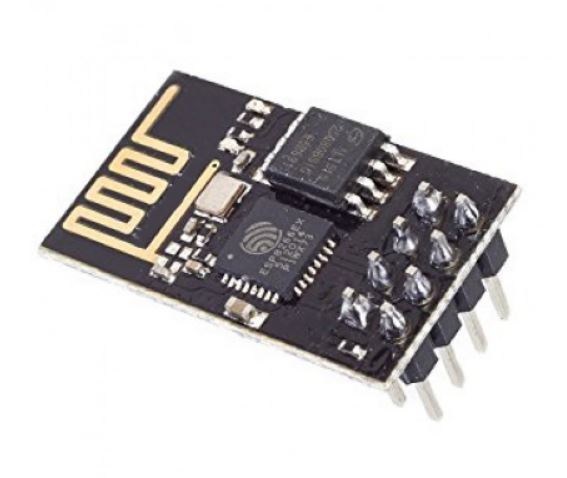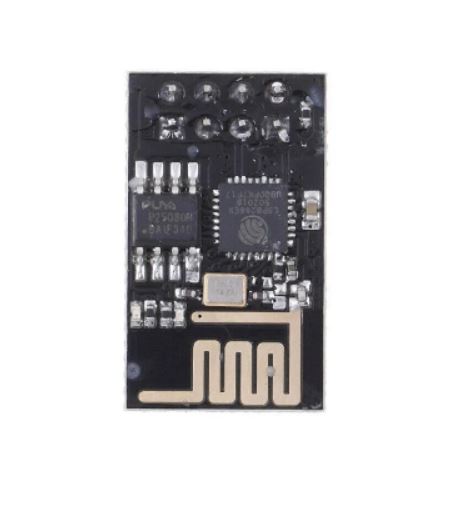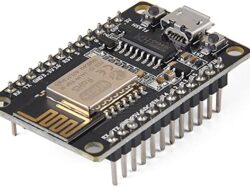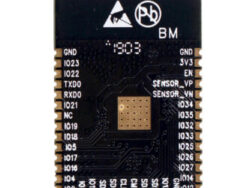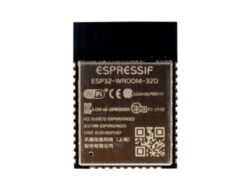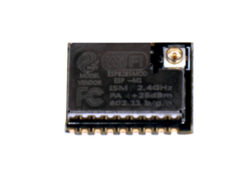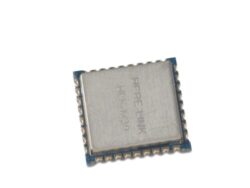ESP8266 ESP-01 Serial WiFi Wi-fi Transceiver Module
The ESP 01 ESP8266 Serial WIFI Wireless Transceiver Module may be a self-contained SOC with integrated TCP/IP protocol stack which will give any microcontroller access to your WiFi network. The ESP8266 is capable of either hosting an application or offloading all Wi-Fi networking functions from another application processor.
Each ESP8266 module comes pre-programmed with an AT command set firmware, meaning, you can simply hook this up to your Arduino device and get about as much WiFi-ability as a WiFi Shield offers (and that’s just out of the box)! The ESP8266 module is a particularly cost-effective board with an enormous , and ever-growing, community.
15
People watching this product now!
Description
The ESP 01 ESP8266 Serial WIFI Wi-fi Transceiver Module could also be a self-contained SOC with built-in TCP/IP protocol stack which is able to give any microcontroller entry to your WiFi community. The ESP8266 is able to both internet hosting an software or offloading all Wi-Fi networking capabilities from one other software processor.
Every ESP8266 module comes pre-programmed with an AT command set firmware, which means, you may merely hook this as much as your Arduino gadget and get about as a lot WiFi-ability as a WiFi Defend gives (and that’s simply out of the field)! The ESP8266 module is a very cost-effective board with an unlimited , and ever-growing, group.
This module includes a highly effective sufficient on-board processing and storage functionality that allows it to be built-in with the sensors and different application-specific gadgets by its GPIOs with minimal improvement up-front and minimal loading throughout runtime.
Its excessive diploma of on-chip integration permits for minimal exterior circuitry, together with the front-end module, which is supposed to occupy minimal PCB space. The ESP8266 helps APSD for VoIP functions and Bluetooth co-existence interfaces, it incorporates a self-calibrated RF permitting it to work below all working circumstances and requires no exterior RF elements.
There may be an virtually limitless fountain of information out there for the ESP8266, all of which has been supplied by superb group assist. Within the helpful hyperlinks part under you will discover many assets to help you in utilizing the ESP8266, even directions on the best way to remodeling this module into an IoT (Web of Issues) answer! The ESP8266 Module is not able to 5-3V logic shifting and might require an exterior Logic Stage Converter. Please don’t energy it immediately out of your 5V dev board. This new model of the ESP8266 WiFi Module has elevated the flash disk dimension from 512k to 1MB.It options an built-in TR change, balun, LNA, energy amplifier and matching community, Equips built-in PLL, regulators, DCXO and energy administration items, Built-in low energy 32-bit CPU may very well be used as an software processor, SDIO 1.1 / 2.0, SPI, UART, STBC, 1×1 MIMO, 2×1 MIMO, A-MPDU & A-MSDU aggregation & 0.4ms guard interval, Get up and transmit packets in < 2ms,Standby energy consumption of < 1.0mW (DTIM3).


